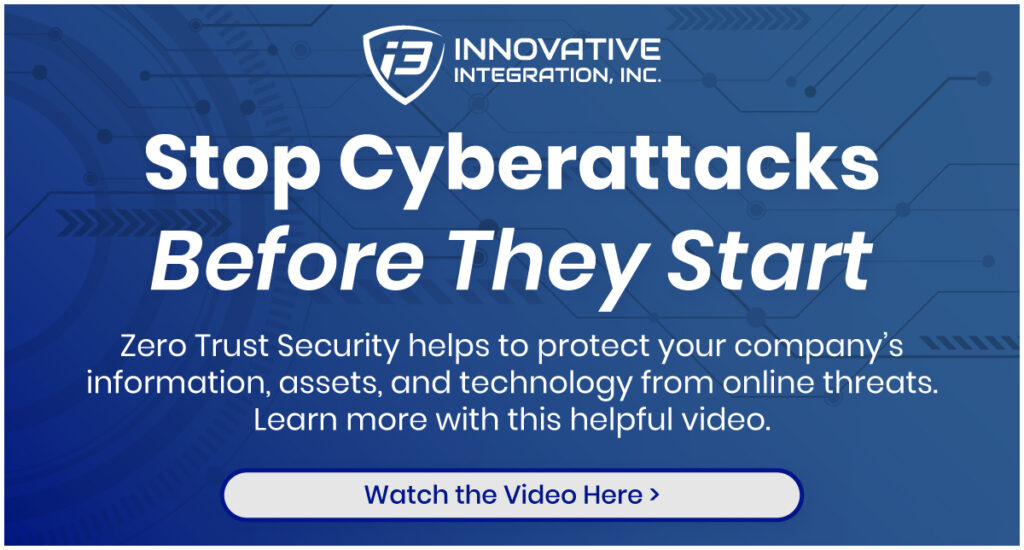Statistics show that across 2022, nearly 83% of cyberattacks started through phishing emails. How is this possible? The answer is impersonation attacks, which have become sophisticated enough to allow hackers to slip under cybersecurity measures and impersonate managers. With more employees inadvertently sharing data with imposters, IT providers urge companies to implement impersonation protection. Below, let’s discuss how impersonation attacks work and ways to enforce impersonation protection across your organization.
Is Your Company Ready for Digital Transformation?
The Basics of Impersonation Attacks
Just as the name entails, impersonation attacks are a type of phishing email wherein the attacker poses as a trusted source familiar to the user. Using research on the subject and a nearly identical email address, the hacker mimics the chosen character, hoping to trick the recipient into either clicking an infected link or sending private information under false pretenses.
Cybersecurity solutions can detect most whaling or common phishing emails that contain malware; however, not every impersonation attack carries a virus. Impersonation emails can instead present dangerous links within the message itself and try to convince the reader to follow their request. Since most impersonation attacks pose as senior managers or CEOs targeting employees, challenging the authority of such a request proves difficult, especially for new employees trying to make a good first impression.
Although impersonation emails are quite sophisticated and hard to detect, there are some key ways to identify these imposters, such as:
- Domain name: Impersonation emails imitate legitimate sender addresses with slight differences. For example, if an email comes from CEO@address.com, the attacker could use a similar domain reading CEO@addresss.com. Many security systems will register these emails as legitimate and send them to your inbox.
- Urgency or Threats: Impersonation attacks use their impersonated character’s authority to threaten targets for not meeting demands. The threat of reprimanding or losing a client can frighten employees into compliance, distracting them from reviewing the contents or request at the risk of backlash.
- Privacy: To block targets from questioning requests in person, some hackers ask these demands to be met quietly as a matter of client confidentiality or special project initiating the employee into a promotion. Employees may comply hoping to gain the trust of a respected colleague, only to be deceived.

The Importance of Impersonation Protection
The worst trait about impersonation attacks is their subversive, manipulative nature when infiltrating organizations. As the frequency of attacks rises, organizations require impersonation protection to ensure the security of their network and employees.
What’s unique about impersonation protection is its ability to record and graph identities for each sender within the user’s email. In fact, it constantly scans for potential inbox threats, automatically recording typical communication patterns, domains, links, and behaviors associated with said sender. If usual activity occurs, the system isolates the email into the Junk or Trash folder before users can interact with the content. Thus, approved senders can continue communication uninhibited while impersonators are blocked from users before interaction can begin.
Steps to Ensure Impersonation Protection
There are a variety of ways businesses can implement impersonation protection into their daily practices. Here are a few easy ways you can start implementing impersonation protection into your business practices:
- Security Awareness Training: First and foremost, start by updating and educating all employees on how to spot and block impersonation emails through Security Training. This process can cover other types of cybercrimes—such as ransomware or phishing emails—which could cause damage to your network. In doing so, businesses prevent employees from being victimized, improve productivity, and enhance cyber hygiene practices throughout their network.
- Anti-Impersonation Software: By installing specific security systems, routinely scan employee emails for potential impersonation emails regardless of whether they contain malware or not. These systems can review domains, links, and sender writing patterns to isolate threats.
- Blocking: If users are uncertain about the legitimacy of a sender, it’s important to double-check the sources before acting. Users can block senders from their inbox and send them straight to the Junk or Trash folder if found to be an impersonator.
Find Impersonation Protection with Innovative
Impersonation attacks require strict security guidelines and monitoring of online behavior to protect employees. Whether you realize it or not, such phishing emails present a great threat to private data assets and could severely impair productivity. For the best protection and IT monitoring options, trust Innovative Integration’s cybersecurity resources. Curious about our protection options? Learn more about our Services and Products now!





